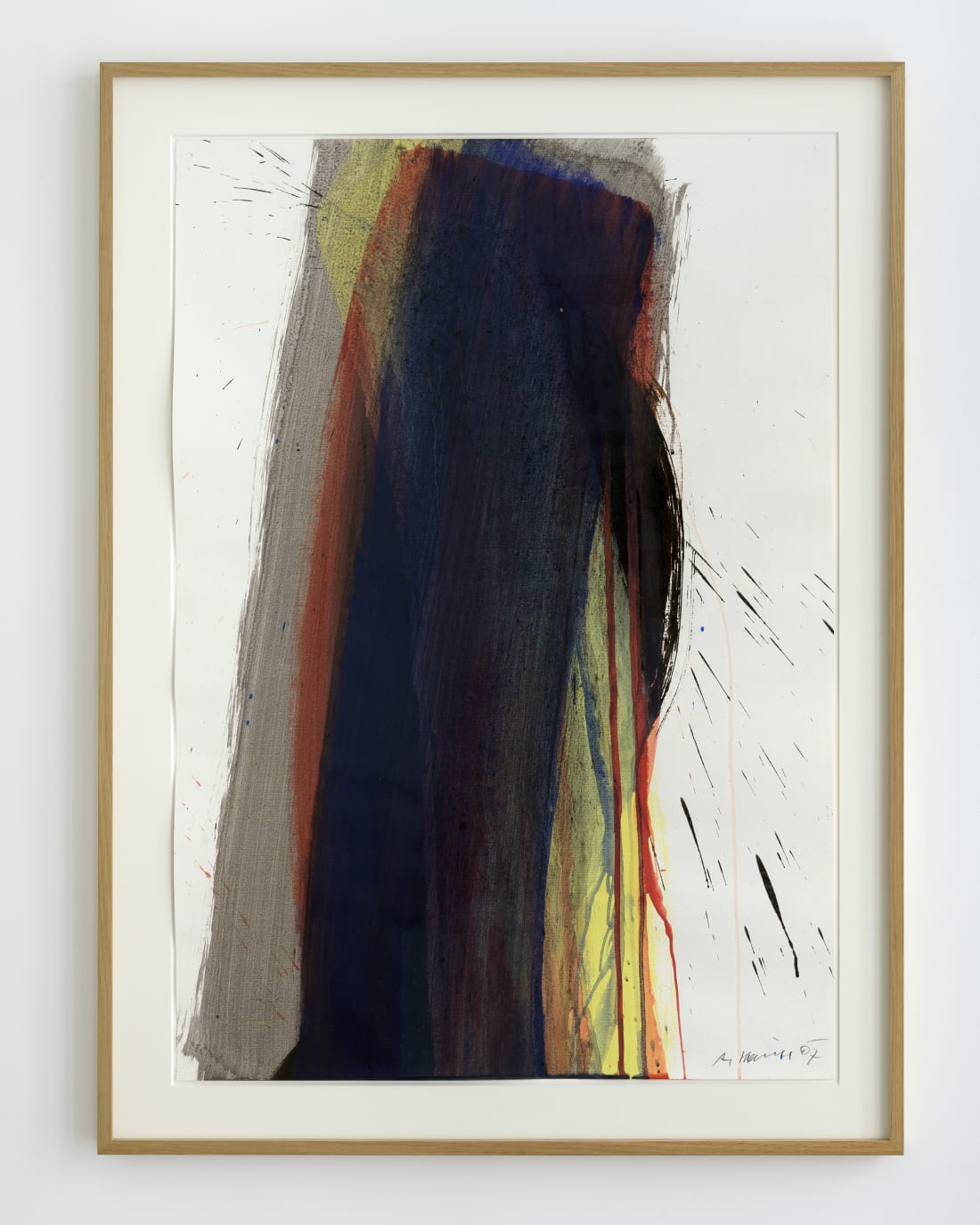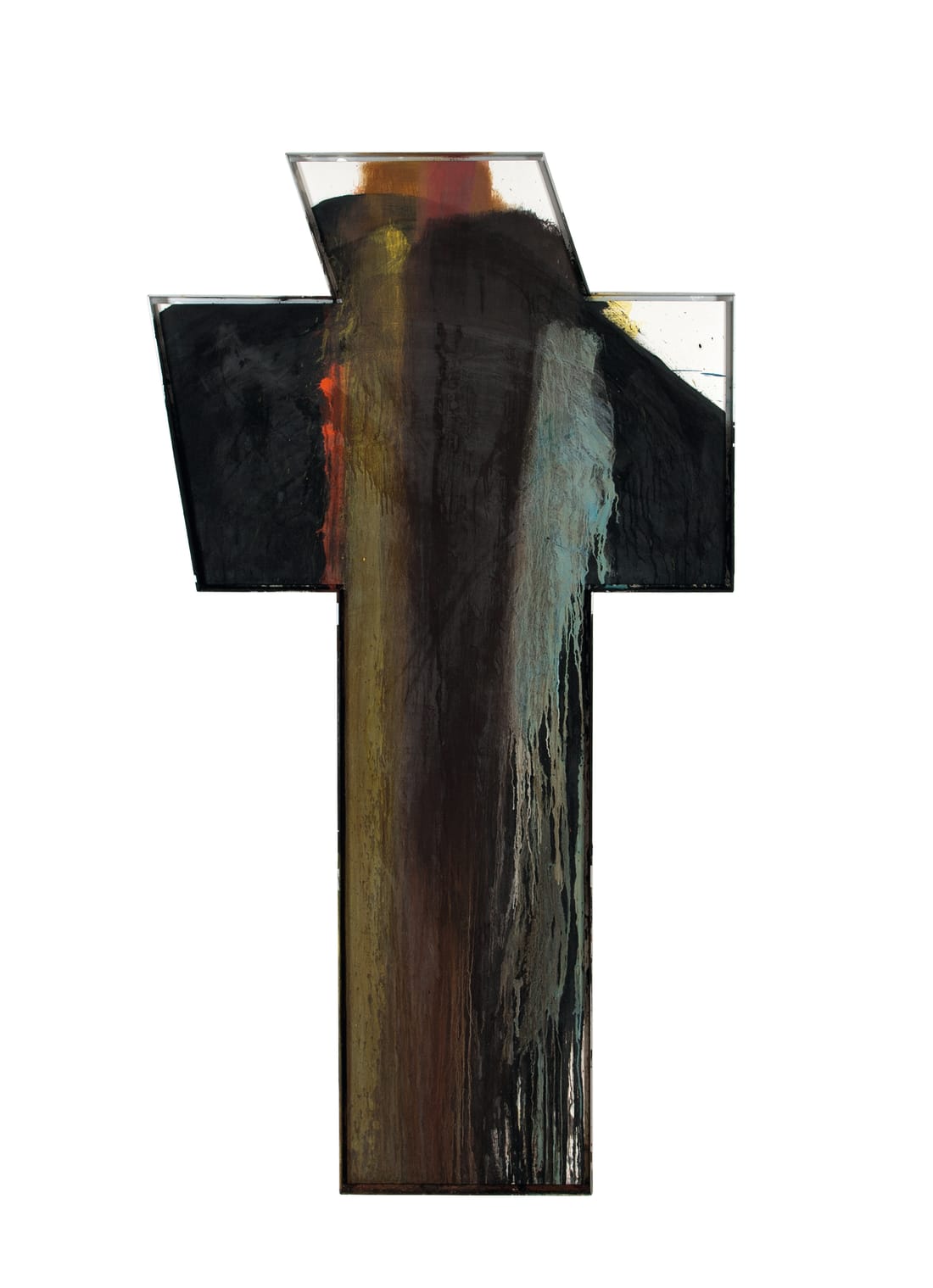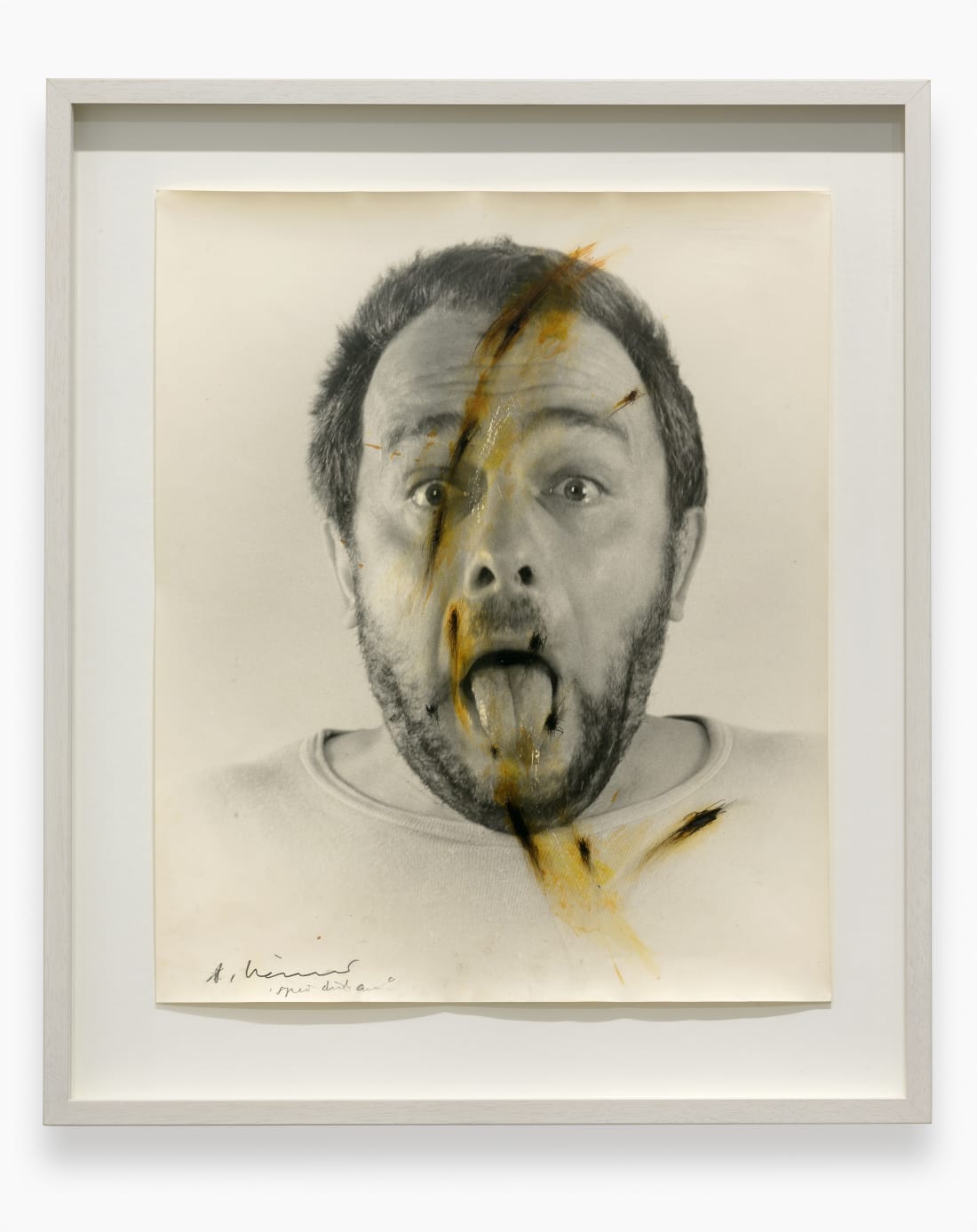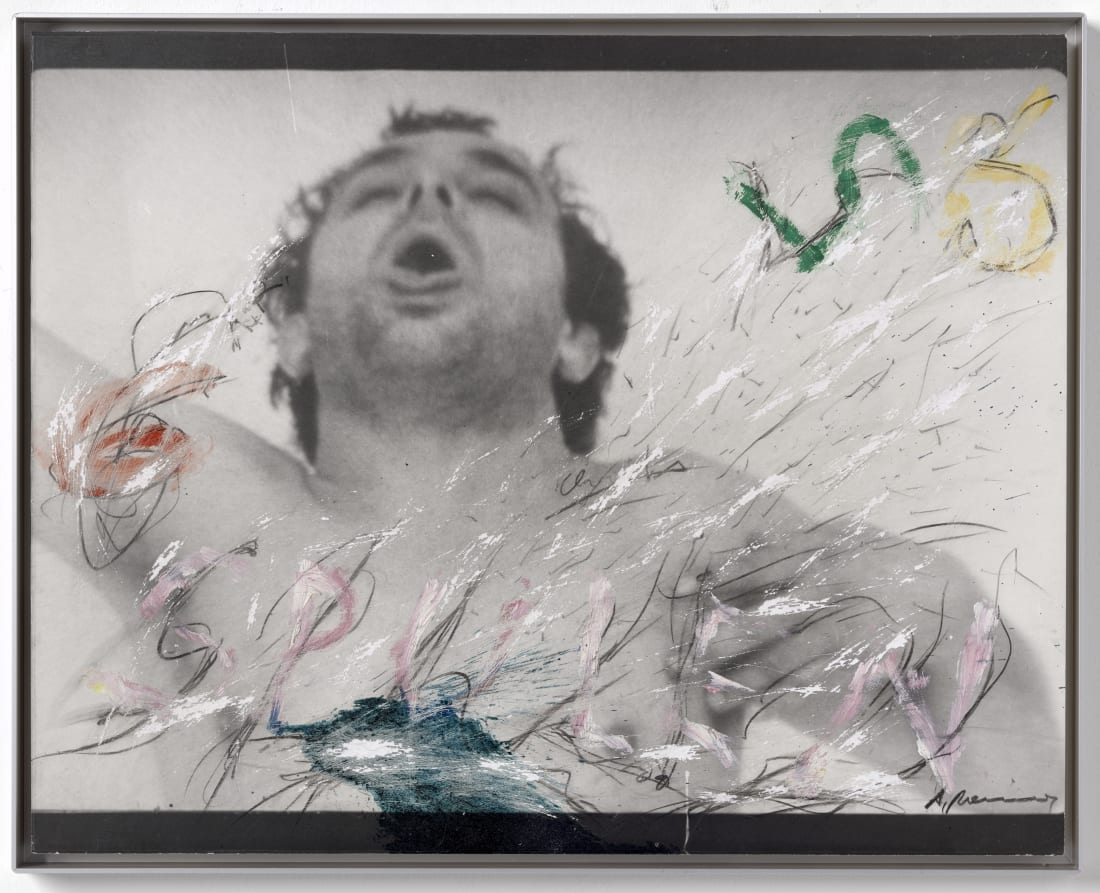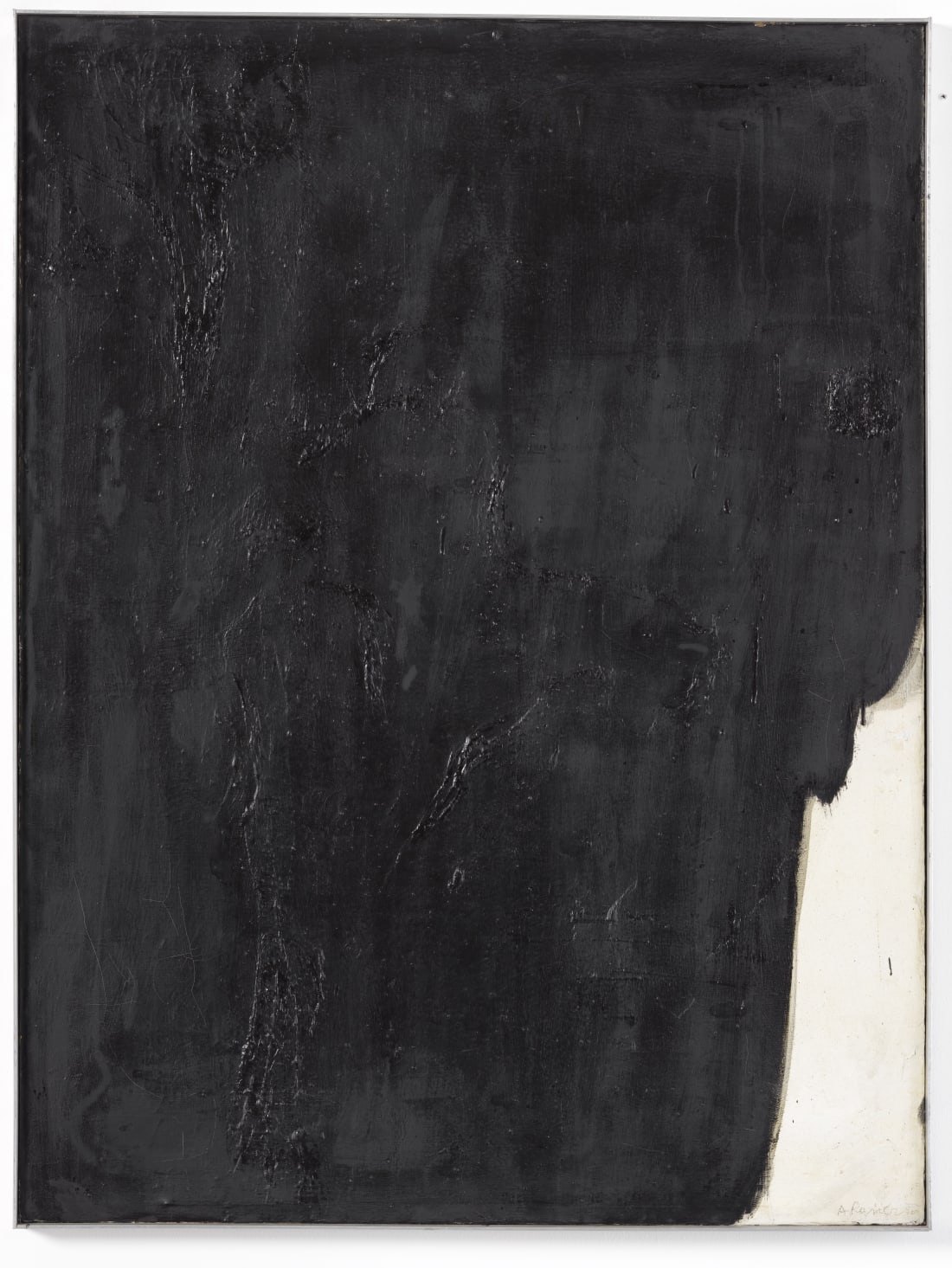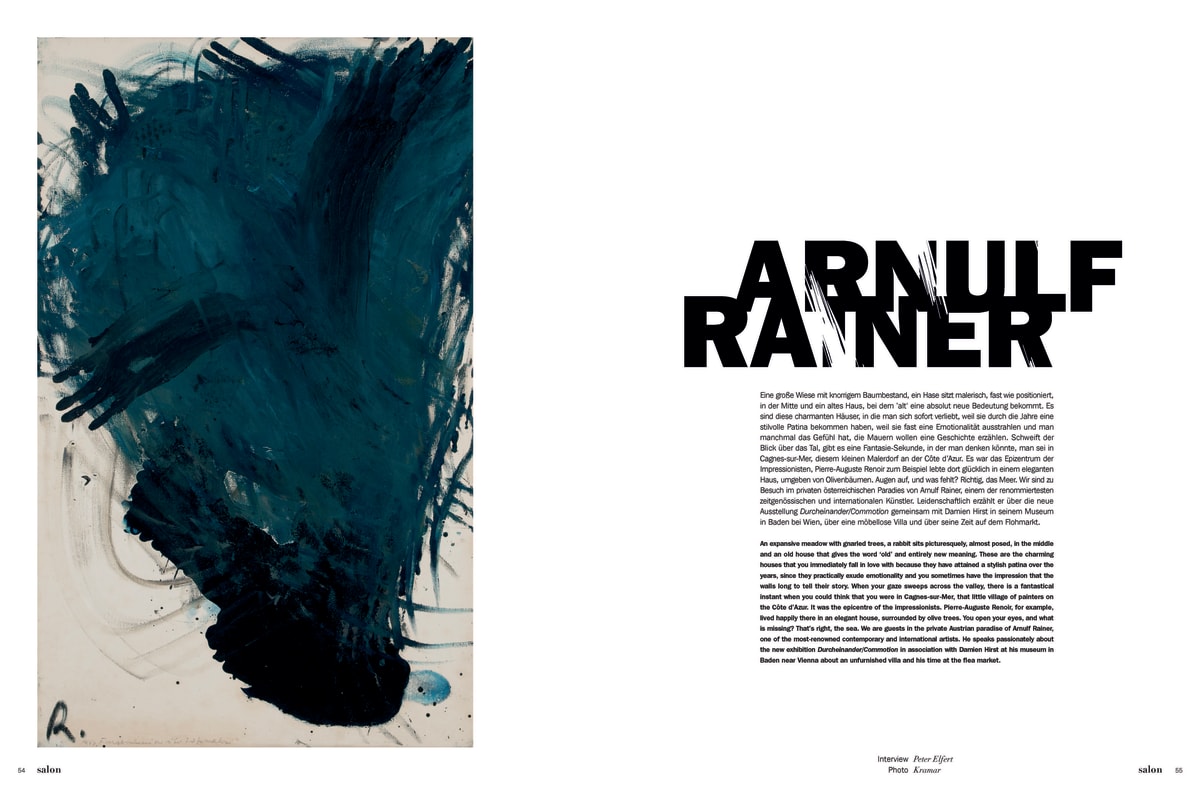

Arnulf Rainer
Overview
'I consider artistic creation to be first an inner monologue. A little like the dream continues in deep sleep, the covering of a painting is the continuation of this monologue in silence.'
The Austrian artist Arnulf Rainer is regarded as a pioneer of Art Informel, a movement which brought an intuitive form of lyrical expression into the field of abstraction. One of his early influences was Surrealism, and an ongoing interest in dreams and the subconscious imparts a mystical element to his work. He created his first Overpaintings in 1952, layering brushstrokes over existing artworks or photographs, and has continued to investigate the possibilities of this process throughout his career. Produced in dialogue with the underlying source material, which remains visible to varying degrees, the overpaintings play with notions of creation and destruction in a paradoxical homage to the original.
Drawing and painting over his own canvases and, from 1953 onwards, those by others, Rainer creates densely textured abstract works through the slow accumulation of considered brushstrokes. The process itself is of paramount importance to the artist, akin to a visual form of spiritual consciousness: 'The organic act of creating is perhaps more essential than the completed painting; for this progressive participation in the obscuration or immersion of the painting, its gradual return to peace and invisibility […] could be compared to the contemplative experience of religious life.' This contemplative experience is one he imparts to the viewer, who is left to ponder the tantalising mystery of what lies beneath.
The Austrian artist Arnulf Rainer is regarded as a pioneer of Art Informel, a movement which brought an intuitive form of lyrical expression into the field of abstraction. One of his early influences was Surrealism, and an ongoing interest in dreams and the subconscious imparts a mystical element to his work. He created his first Overpaintings in 1952, layering brushstrokes over existing artworks or photographs, and has continued to investigate the possibilities of this process throughout his career. Produced in dialogue with the underlying source material, which remains visible to varying degrees, the overpaintings play with notions of creation and destruction in a paradoxical homage to the original.
Drawing and painting over his own canvases and, from 1953 onwards, those by others, Rainer creates densely textured abstract works through the slow accumulation of considered brushstrokes. The process itself is of paramount importance to the artist, akin to a visual form of spiritual consciousness: 'The organic act of creating is perhaps more essential than the completed painting; for this progressive participation in the obscuration or immersion of the painting, its gradual return to peace and invisibility […] could be compared to the contemplative experience of religious life.' This contemplative experience is one he imparts to the viewer, who is left to ponder the tantalising mystery of what lies beneath.
During the 1960s and 1970s, experiments such as 'blind drawing' brought Rainer into contact with Viennese Actionism, as he explored the extremes of facial expression and body language in his Face Farces and Body Poses series. These photographic self-portraits were often overpainted with gestural strokes that emphasise their frenetic expressivity. This process stands in stark contrast to the mathematical rigour of his earlier Proportion Studies, which were influenced by the formal investigations of Piet Mondrian and Josef Albers. From the 1980s onwards, he increasingly used religious motifs, such as the cross and crucifixion, with their connotations of suffering and death but also transcendence. In 1995–98, he produced a sequence of overpainted biblical works, ranging from 10th-century illuminated manuscripts to 19th-century artworks.
Born in Baden, where the Arnulf Rainer Museum was established in 2009, the artist lives and works in Vienna, Bavaria and Tenerife. In 1968, the Museum des 20. Jahrhunderts in Berlin organised one of the first retrospectives of his work, followed by another in 1971 at the Kunstverein in Hamburg. He took part in documenta in Kassel (1972, 1977 and 1982) and represented Austria at the Venice Biennale in 1978, the same year he was awarded the Grand Austrian State Prize. His work has been the subject of retrospectives at international institutions, including the Centre Pompidou, Paris (1984); Solomon R. Guggenheim Museum, New York (1989); Stedelijk Museum, Amsterdam (2000); Kunstmuseum Den Haag, Netherlands (2005); Alte Pinakothek, Munich (2010); Albertina, Vienna (2014); and Lentos Kunstmuseum Linz, Austria (2017). In 2002, the Pinakothek der Moderne in Munich dedicated a room to the artist, where his work will be on permanent display.
Videos



Artworks

Expositions

Catalogues



Arnulf Rainer
Early Work
Catalogues

Arnulf Rainer

Arnulf Rainer

Arnulf Rainer

Arnulf Rainer


